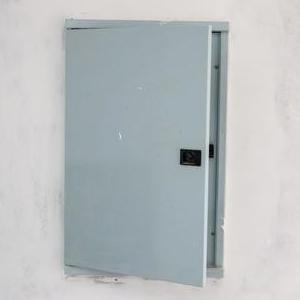Your Cart is Empty
Fuses
- ACK
- ACL
- AGA
- AGC
- AGW
- AGX
- ALS
- ANN
- ANL
- BAF
- BAN
- BBS
- CT
- C10
- DFJ
- DMM
- ECNR
- ECSR
- EDCC
- EET
- ET
- FE
- FEE
- FM
- FNA
- FNM
- FNQ
- FNQ-R
- FRN-R
- FRS-R
- FWA
- FWC
- FWH
- FWJ
- FWP
- FWX
- GLR
- GMA
- GMT
- HAC-R
- HCLR
- HCTR
- HVA
- JDL
- JJN
- JJS
- JKS
- KAA
- KAB
- KAC
- KBC
- KBH
- KLM
- KLU
- KON
- KOS
- KRP-C
- KTK
- KTK-R
- KTN-R
- KTS-R
- KTU
- LENRK
- LET
- LESRK
- LMT
- LP-CC
- LPJ
- LPN-RK
- LPS-RK
- MEN
- MEQ
- NON
- NOS
- REN
- RES
- S
- SC
- T
- TCF
- TCF-RN
- TPA
- TPC
- TPL
- TPN
- W
- 170H
- 170M
- 170L
- ACK
- ACL
- AGA
- AGC
- AGW
- AGX
- ALS
- ANN
- ANL
- BAF
- BAN
- BBS
- CT
- C10
- DFJ
- DMM
- ECNR
- ECSR
- EDCC
- EET
- ET
- FE
- FEE
- FM
- FNA
- FNM
- FNQ
- FNQ-R
- FRN-R
- FRS-R
- FWA
- FWC
- FWH
- FWJ
- FWP
- FWX
- GLR
- GMA
- GMT
- HAC-R
- HCLR
- HCTR
- HVA
- JDL
- JJN
- JJS
- JKS
- KAA
- KAB
- KAC
- KBC
- KBH
- KLM
- KLU
- KON
- KOS
- KRP-C
- KTK
- KTK-R
- KTN-R
- KTS-R
- KTU
- LENRK
- LET
- LESRK
- LMT
- LP-CC
- LPJ
- LPN-RK
- LPS-RK
- MEN
- MEQ
- NON
- NOS
- REN
- RES
- S
- SC
- T
- TCF
- TCF-RN
- TPA
- TPC
- TPL
- TPN
- W
- 170H
- 170M
- 170L

How to Fix a Fuse in a Fuse Box
June 12, 2020 3 min read
Many older houses are equipped with fuse boxes. When a fuse blows or trips, it's most likely because there was an electrical overload. Fuses are designed to pass a current from one side to the other. If an unsafe amount of current tries to pass, the fuse will blow, preventing harm to the whole circuit breaker. An overload may occur if there are too many appliances plugged in in a room, sending too much current to the breaker. Power will go out in just that section of the home. Thankfully it's cheap and easy to replace a fuse!
Find Your Electrical Panel
You can find your panel in the garage, basement, or utility room. If you have an old home, the panel might be outside. Large homes may have multiple electrical panels. If you can't find your panel and you've recently had a home inspection, your inspection report will direct you to your panel.
Prevent a Future Blow
Unplug a couple appliances and turn off the lights in the room that lost power. If you had just plugged in an appliance right before power went out, this appliance was likely the culprit. Doing this will ensure that your new replacement fuse will not blow right away.
Safety
Working around electricity can be dangerous! Keep yourself safe by making sure you and the area around you are dry. Do not stand on a metal ladder. Substances such as metal and water conduct electricity, and could give you an electrical shock. If you want to be extra careful, wear rubber-soled shoes and rubber gloves.
Find the Blown Fuse
Open up the electrical panel and find the area that corresponds to the section of your house that lost power. Your electrical panel should be labeled. If the fuses in your box are have glass windows, visually inspect them. The windows will have turned gray-ish black or you will be able to see a broken fuse. If you are unable to visually inspect the fuses, grab a multimeter or continuity tester. Turn the main switch off before testing a fuse this way! We have an article about testing fuses with with a multimeter or continuity tester here.

Remove the Fuse
Turn the main switch off. Older homes tend to have plug/screw fuses. These are easy to take out - just unscrew by turning left! Cartridge fuses may be more difficult to remove. If you have a fuse puller, grasp the fuse center and pull. If you don't have a fuse puller, grab a screwdriver or pliers and pry the fuse out. Gently pry the fuse out by the ends. If the fuse tubing is glass, be careful to not crush the tubing.
Find a Replacement
You'll want to replace the blown fuse with an identical one. Be sure to not replace the fuse with one of a higher amperage. It is okay to replace it with one of an equal or higher voltage. If this is your first time finding a fuse replacement, check out our fuse basics guide to understand the specs of a fuse. Once you're ready, buy your fuse from us! We pride ourselves in carrying a vast selection of high-quality, low-price fuses. If we don't have what you're looking for, contact us! We're sure we can find it.
Install Your New Fuse
Once you have your replacement fuse, simply screw the fuse back in, turning right. Once it's in, restore the power.

